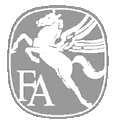| |
Restoration Goals
The major issues that need to be addressed during the Fairchild restoration
are:
- Repair of the engine mount to have straight tubing. A prior repair
to the airplane was to replace the engine mount. On modern aircraft
the engine mount is removable, but on the Fairchild the engine mount is
welded directly to the airframe. A prior repair was to replace the
engine mount with a mount from a different airplane. Since all of
these airframes were hand built they're all subtly different in dimension,
so when the replacement engine mount was welded on it didn't quite line up.
The tubes for the engine mount are spliced per regulation, but the tubing
entering and exiting the splice "sleeve" tube are at different angles!
- Corrosion protection of the fuselage steel tubular frame.
- Poor repairs to wing. Wings may need a complete rebuild.
- Bolt hole elongation on the main wing struts, leaving the struts loose.
The left strut attach point has been drilled oversize, which probably means
the tabs at the junction are now too weak to withstand full load.
- General fit and finish is poor.
There are numerous smaller details that will be addressed during the
restoration:
- Sheet metal boot cowling and cockpit coaming rippled and cracked.
- Engine cowling bent out of shape with excessive number of patches.
- Interference of the aileron controls with the magneto switch in the rear
cockpit - switch broken and hot magneto.
- Left aileron interference with the aileron cove false spar.
- Aileron coves on both wings pulled out of shape by fabric over-tensioning.
- Interference of the rear spark plugs with the exhaust manifold.
- Interference of the exhaust manifold with the front cowling portions.
- Poor installation of carburetor heat manifold.
- Poor condition of instruments in the rear cockpit.
- Instrument panels not original - the original oval shock mounted panels
have been replaced with a single flat panel.
- Engine wiring old and not routed properly.
- Brake cables broken and drums partially locked up.
- Broken rib on the left wing (broken during disassembly).
- Tailwheel installation loose and not steerable or lockable.
- Cracks and large divots in the wooden prop - needs replacement.
- Corrosion on the crankshaft splined shaft and prop plates.
- Front cockpit door rippled and poor fit, hinge cracked and falling apart.
- Front cockpit trim wheel pulley interferes with fuel shutoff valve
actuating rod.
My philosophy on restorations is that I intend to fly the airplane regularly,
and I want to be reasonably safe in doing so. Therefore I will update
systems that have vastly improved modern replacements to increase the safety
factor, as long as the improvement does not greatly compromise the original
shape or value of the aircraft. Examples of things I will update include
modern materials for wiring, hoses and piping, standardized AN hose fittings,
modern glues, hydraulic disk brakes, and a steerable tailwheel. I am also
aggressive about corrosion prevention and will prime and paint parts that
originally may not have been so treated.
The amazing part is that most of the hardware and airframe parts and
materials are the same today as they were when the aircraft was built, for
example the 4130 steel material used in the fuselage tubing.
Fortunately the engine is a relatively recent overhaul. The engine
started and ran on the ground in California, but it has been a long time since
the engine was flown and Warner SS50A's are known to have valve problems due to
too much, too little, or condensed grease in the rocker boxes. I will
probably pull the jugs, remove the valves and clean out old grease, then
reassemble with fresh grease.
|
|

